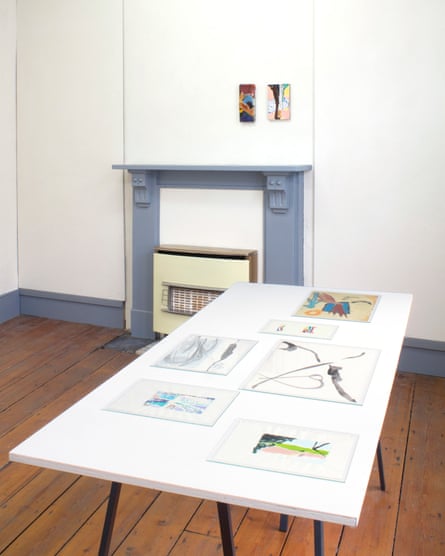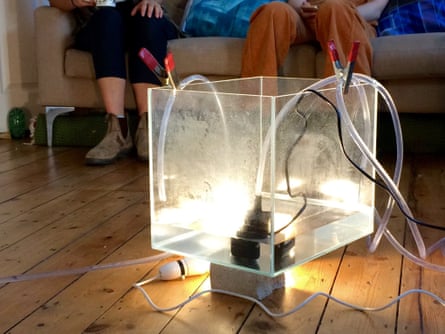Two months after Isobel Atacus moved into her new home in Walthamstow, London, she made an unusual decision: she would turn her living space into an art gallery. Since then, exhibitions have happened in every room, even the loo.
“Last year we exhibited a work that was a kind of ecosystem, stretched out over the floor of our living room,” she says. “There was was a block of ice melting through an unfired clay disc into a bowl below and the sediment water was pumped into a tank. It was a beautiful piece to live with for a few days.”
Atacus is among a small but growing number of artists giving other artists space in their homes to put on shows. This is art that is happening between the pots and pans in the kitchen, on the living room window sill or above the gas fire.

Called the icing room, Atacus’s gallery is part of a growing market that includes Bunkhouse, an on-off residency in Hackney, London, run by Sophie Rogers; Bede House, in New Cross, London, run by Stephanie Busson; and Flat38 in Margate, run by Claire Orme.
Some artists don’t not have a whole home to offer but that has not stopped them. In 2013, Lola Bunting turned the living room of her parents’ house in Hackney, into the 53 Beck Road gallery and has put on 18 shows. “Some people show up and you can see they are thinking, ‘What is this?’” says Bunting. “But it is easier to have conversations about the work than in a traditional gallery.”
Like most of the other galleries, 53 Beck Road grew from a feeling that exhibition space in London was squeezed. “It is hard as an artist,” says Bunting. “There’s lots of spaces but it is harder to make an exhibition than it used to be. I wanted to do something and work collaboratively.” That feeling of being squeezed out isn’t restricted to London.
Fiona Candlin, professor of museology at Birkbeck University in London, has been documenting small independent museums in the UK for a project called Mapping Museums. “If lots of people are setting up small galleries in their homes,” she says, “that suggests a very different model of what it means to be a curator and what it means to have an exhibition. It is a much less professionalised model, more ad hoc and closer to a DIY aesthetic. That gives a very different sense of what’s happening in the art world, especially when you compare it with the new, more formal galleries opening up.”

Bunting’s parents, Karen and Peter, are both artists and moved into Beck Road in the late 70s under Acme, a housing-for-artists scheme. Back then, Hackney was full of empty houses. Today, the front room gallery is in an area that is way out of the average artist’s rent range, a reminder of how important giving affordable space to artists really is.
The cost of space is a reason these galleries exist, but it isn’t the only one. Orme set up Flat38 in her two-bedroom duplex so she could find a community of artists and art lovers. “It just felt like the right thing to do,” she says, “to invite them into my home, rather than into another space that none of us had a relationship with.” Her most ambitious exhibition so far was Merz, an installation of large paper sculptures by Samuel Keyte that were hung throughout the flat. During the opening, Orme used her bedroom as a bar.

Going against the grain of the traditional white cube gallery space is another appeal. Unlike the plain-walled behemoths of the art world, these galleries are maintained by people who are working full-time and have their own art practice, too. “I’m really interested in what a domestic space can be,” says Atacus. “It is kind of a threshold, neither art setting nor domestic setting. We need spaces where we can have conversations. There is this need, we all feel, to take exhibiting into our own hands.”

Comments (…)
Sign in or create your Guardian account to join the discussion